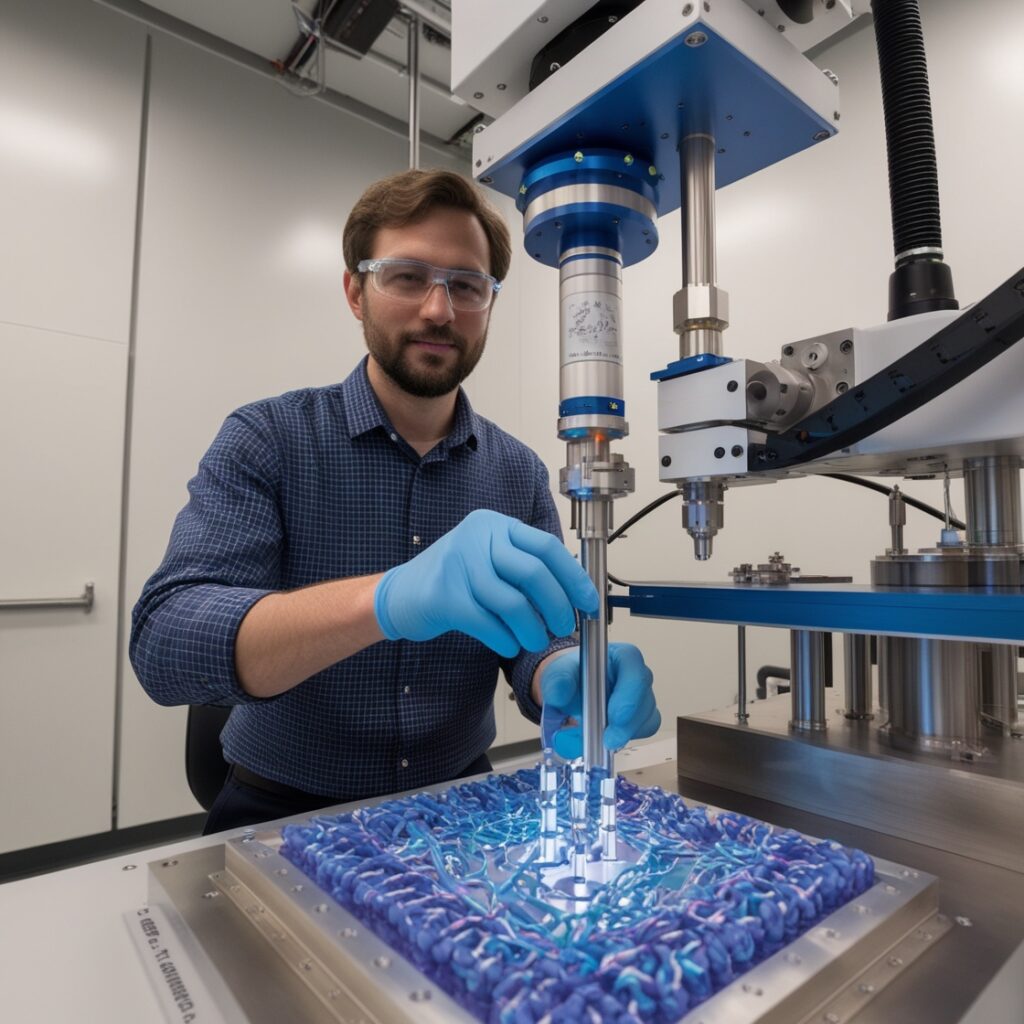Over time, materials evolve, just like people. Additionally, the way they act depends on whether they are stressed or not. A new method that combines artificial intelligence (AI), machine learning, and X-ray photon correlation spectroscopy (XPCS) has been created by scientists who want to quantify the dynamics of material change.
This method generates “fingerprints” of various materials that a neural network can read and interpret to produce new data that was previously unavailable to scientists. A computer model that mimics how the human brain makes decisions is called a neural network.
Researchers at the Center for Nanoscale Materials (CNM) and Advanced Photon Source (APS) at the U.S. Department of Energy’s (DOE) Argonne National Laboratory have paired XPCS with an unsupervised machine learning algorithm, a type of neural network that doesn’t require expert training, in a recent study. The program trains itself to identify patterns that are concealed inside X-ray arrangements that are scattered by a colloid, which is a collection of particles suspended in solution. Both the APS and CNM are user facilities for the DOE Office of Science.

The study’s publication can be found in Nature Communications.
James (Jay) Horwath, an Argonne postdoctoral researcher and the study’s first author, explained that gathering X-ray scattering data helps us understand how materials move and change over time. Without AI support, scientists would not be able to identify these patterns due to their complexity.
The patterns are so varied and intricate as we shine the X-ray beam that it is challenging for even specialists to decipher what any of them imply, according to Horwath.
Researchers must distill all of the data into fingerprints that contain only the most crucial details about the sample in order to gain a deeper understanding of the subject matter they are examining. It’s like possessing the material’s genome, Horwath explained, with all the information needed to piece the whole picture together.
Artificial Intelligence for Non-Equilibrium Relaxation Dynamics, or AI-NERD, is the name of the project. A method known as an autoencoder is used to create the fingerprints. Scientists refer to this sort of neural network as an autoencoder, which converts the original picture data into a fingerprint (called a latent representation). It also has a decoder algorithm that allows one to go from the latent representation back to the original image.
Attempting to map the fingerprints on the material and grouping fingerprints with comparable traits into neighborhoods was the researchers’ aim. The characteristics of the different fingerprint neighborhoods on the map were examined holistically by the researchers, which helped them gain a deeper understanding of the structure of the materials and how it changed as they underwent stress and relaxation.
AI can effectively classify the many X-ray images and arrange them into a map because, to put it simply, it has strong general pattern recognition ability.
The AI’s objective is to simply interpret the scattering patterns as regular images or pictures and process them in order to identify any recurring patterns, according to Horwath. “The AI is a pattern recognition expert.”
When the updated APS is online, it will be crucial to use AI to comprehend scattering data. Compared to the original APS, the upgraded facility will produce X-ray beams that are 500 times brighter.
AI’s ability to sift through the data obtained from the enhanced APS will be necessary, according to Horwath.
In order to do molecular simulations of the polymer dynamics shown by XPCS and, moving forward, to synthetically produce data for training AI workflows such as the AI-NERD, the theoretical group at CNM worked in conjunction with the computational group in Argonne’s X-ray Science division.
Xiao-Min Lin, Hongrui He, Qingteng Zhang, Eric Dufresne, Miaoqi Chu, Subramanian Sankaranaryanan, Wei Chen, Suresh Narayanan, and Mathew Cherukara are among the authors of the study, which was conducted at Argonne. Chen, He, and Sankaranaryanan hold joint posts at the University of Chicago and the University of Illinois at Chicago, respectively.








